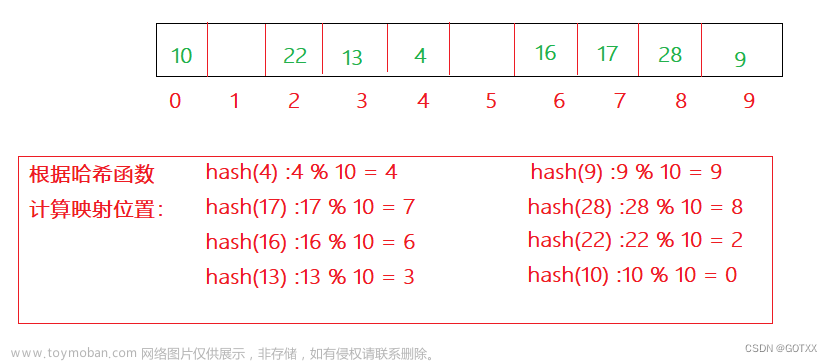一、RBT.h
#pragma once
#include <utility>
namespace yzz
{
enum Color
{
RED,
BLACK
};
template<class T>
struct RBTNode
{
RBTNode<T>* _left;
RBTNode<T>* _right;
RBTNode<T>* _parent;
T _data;
Color _clr;
RBTNode(const T& data = T(), Color clr = RED)
: _left(nullptr), _right(nullptr), _parent(nullptr)
, _data(data), _clr(clr)
{ }
};
template<class T, class Ref, class Ptr>
struct RBTIterator
{
typedef RBTNode<T> Node;
typedef RBTIterator<T, T&, T*> iterator;
typedef RBTIterator<T, const T&, const T*> const_iterator;
typedef RBTIterator<T, Ref, Ptr> self;
Node* _pnode;
RBTIterator(Node* p) : _pnode(p) { }
// 可以通过 iterator 迭代器构造 const_iterator 迭代器
RBTIterator(const iterator& it) : _pnode(it._pnode) { }
Ref operator*() const
{
return _pnode->_data;
}
T* operator->() const
{
return &_pnode->_data;
}
void increment()
{
if (_pnode->_right)
{
// 若右子树存在,则找到右子树中值最小的节点(即右子树中最左侧的节点)
Node* rightMin = _pnode->_right;
while (rightMin->_left)
{
rightMin = rightMin->_left;
}
_pnode = rightMin;
}
else
{
// 若右子树不存在,表明以 *_pnode 为根的子树已经访问完了
Node* parent = _pnode->_parent;
while (parent)
{
if (_pnode == parent->_left)
{
// 若 *_pnode 是 *parent 的左孩子,
// 则下一个该访问的节点就是 *parent
break;
}
else
{
// 若 *_pnode 是 *parent 的右孩子,
// 则以 *parent 为根的子树也已经访问了
_pnode = parent;
parent = parent->_parent;
}
}
_pnode = parent;
}
}
void decrement()
{
if (_pnode->_left)
{
// 若左子树存在,则找到左子树中值最大的节点(即左子树中最右侧的节点)
Node* leftMax = _pnode->_left;
while (leftMax->_right)
{
leftMax = leftMax->_right;
}
_pnode = leftMax;
}
else
{
Node* parent = _pnode->_parent;
while (parent)
{
if (_pnode == parent->_right)
{
// 若 *_pnode 是 *parent 的右孩子,
// 则上一个已访问的节点就是 *parent
break;
}
else
{
// 若 *_pnode 是 *parent 的左孩子
_pnode = parent;
parent = parent->_parent;
}
}
_pnode = parent;
}
}
self& operator++()
{
increment();
return *this;
}
self operator++(int)
{
self tmp = *this;
increment();
return tmp;
}
self& operator--()
{
decrement();
return *this;
}
self operator--(int)
{
self tmp = *this;
decrement();
return tmp;
}
bool operator==(const self& it) const
{
return _pnode == it._pnode;
}
bool operator!=(const self& it) const
{
return _pnode != it._pnode;
}
};
template<class K, class T, class KOfT>
class RBT
{
typedef RBTNode<T> Node;
public:
/*---------- 构造函数和析构函数 ----------*/
RBT() : _root(nullptr) { }
~RBT()
{
Destroy(_root);
}
/*---------- 迭代器 ----------*/
typedef RBTIterator<T, T&, T*> iterator;
typedef RBTIterator<T, const T&, const T*> const_iterator;
iterator begin()
{
Node* leftMin = _root;
while (leftMin->_left)
{
leftMin = leftMin->_left;
}
return iterator(leftMin);
}
iterator end()
{
return iterator(nullptr);
}
const_iterator begin() const
{
Node* leftMin = _root;
while (leftMin->_left)
{
leftMin = leftMin->_left;
}
return const_iterator(leftMin);
}
const_iterator end() const
{
return const_iterator(nullptr);
}
/*---------- 插入 ----------*/
std::pair<iterator, bool> insert(const T& data)
{
if (_root == nullptr)
{
_root = new Node(data, BLACK);
return std::make_pair(iterator(_root), true);
}
Node* parent = nullptr;
Node* cur = _root;
KOfT kot;
while (cur)
{
parent = cur;
if (kot(data) < kot(cur->_data))
cur = cur->_left;
else if (kot(data) > kot(cur->_data))
cur = cur->_right;
else
return std::make_pair(iterator(cur), false);
}
// 如果插入前树非空,新插入的节点应该是红色节点
cur = new Node(data, RED);
Node* tmp = cur;
if (kot(data) < kot(parent->_data))
parent->_left = cur;
else
parent->_right = cur;
cur->_parent = parent;
// 出现连续两个红色节点的情形
while (parent && parent->_clr == RED)
{
Node* grandparent = parent->_parent;
Node* uncle;
if (grandparent->_left == parent)
uncle = grandparent->_right;
else
uncle = grandparent->_left;
// 如果 *uncle 是红色节点
if (uncle && uncle->_clr == RED)
{
parent->_clr = uncle->_clr = BLACK;
grandparent->_clr = RED;
cur = grandparent;
parent = cur->_parent;
}
else // 如果 *uncle 不存在或者是黑色节点
{
if (grandparent->_left == parent && parent->_left == cur)
{
LL(grandparent);
parent->_clr = BLACK;
grandparent->_clr = RED;
}
else if (grandparent->_right == parent && parent->_right == cur)
{
RR(grandparent);
parent->_clr = BLACK;
grandparent->_clr = RED;
}
else if (grandparent->_left == parent && parent->_right == cur)
{
LR(grandparent);
cur->_clr = BLACK;
grandparent->_clr = RED;
}
else if (grandparent->_right == parent && parent->_left == cur)
{
RL(grandparent);
cur->_clr = BLACK;
grandparent->_clr = RED;
}
break;
}
}
_root->_clr = BLACK;
return std::make_pair(iterator(tmp), true);
}
private:
void Destroy(Node*& root)
{
// 【注意:root 为 _root 或者某个节点的左或右指针的引用】
if (root == nullptr)
return;
Destroy(root->_left);
Destroy(root->_right);
delete root;
root = nullptr;
}
void LL(Node* parent)
{
Node* cur = parent->_left;
Node* curRight = cur->_right;
parent->_left = curRight;
if (curRight)
curRight->_parent = parent;
cur->_right = parent;
Node* tmp = parent->_parent;
parent->_parent = cur;
cur->_parent = tmp;
if (tmp == nullptr)
{
_root = cur;
}
else
{
if (tmp->_left == parent)
tmp->_left = cur;
else
tmp->_right = cur;
}
}
void RR(Node* parent)
{
Node* cur = parent->_right;
Node* curLeft = cur->_left;
parent->_right = curLeft;
if (curLeft)
curLeft->_parent = parent;
cur->_left = parent;
Node* tmp = parent->_parent;
parent->_parent = cur;
cur->_parent = tmp;
if (tmp == nullptr)
{
_root = cur;
}
else
{
if (tmp->_left == parent)
tmp->_left = cur;
else
tmp->_right = cur;
}
}
void LR(Node* parent)
{
Node* cur = parent->_left;
RR(cur);
LL(parent);
}
void RL(Node* parent)
{
Node* cur = parent->_right;
LL(cur);
RR(parent);
}
private:
Node* _root;
};
}二、set.h
#pragma once
#include "RBT.h"
namespace yzz
{
template<class K>
class set
{
struct SetKOfT
{
const K& operator()(const K& key)
{
return key;
}
};
typedef RBT<K, K, SetKOfT> RBT;
public:
typedef typename RBT::const_iterator iterator;
typedef typename RBT::const_iterator const_iterator;
const_iterator begin() const
{
return _t.begin();
}
const_iterator end() const
{
return _t.end();
}
std::pair<const_iterator, bool> insert(const K& key)
{
std::pair<typename RBT::iterator, bool> ret = _t.insert(key);
return std::pair<const_iterator, bool>(ret.first, ret.second);
}
private:
RBT _t;
};
}三、map.h
#pragma once
#include "RBT.h"
namespace yzz
{
template<class K, class V>
class map
{
struct MapKOfT
{
const K& operator()(const std::pair<const K, V>& kv)
{
return kv.first;
}
};
typedef RBT<K, std::pair<const K, V>, MapKOfT> RBT;
public:
typedef typename RBT::iterator iterator;
typedef typename RBT::const_iterator const_iterator;
iterator begin()
{
return _t.begin();
}
iterator end()
{
return _t.end();
}
const_iterator begin() const
{
return _t.begin();
}
const_iterator end() const
{
return _t.end();
}
std::pair<iterator, bool> insert(const std::pair<const K, V>& kv)
{
return _t.insert(kv);
}
V& operator[](const K& key)
{
std::pair<iterator, bool> ret = _t.insert(std::make_pair(key, V()));
return ret.first->second;
}
private:
RBT _t;
};
}四、test.cpp
#include "set.h"
#include "map.h"
#include <iostream>
using namespace std;
void TestSet()
{
int arr[] = { 16, 3, 7, 11, 9, 26, 18, 14, 15 };
yzz::set<int> s;
for (const auto& e : arr)
{
s.insert(e);
}
yzz::set<int>::iterator it = s.begin();
while (it != s.end())
{
// *it = 0; // error
cout << *it << " ";
++it;
}
// 3 7 9 11 14 15 16 18 26
cout << endl;
}
void PrintMap(const yzz::map<int, int>& m)
{
yzz::map<int, int>::const_iterator it = m.begin();
while (it != m.end())
{
// it->first = 1; // error
// it->second = 2; // error
cout << it->first << " : " << it->second << endl;
++it;
}
}
void TestMap()
{
int arr[] = { 16, 3, 7, 11, 9, 26, 18, 14, 15 };
yzz::map<int, int> m;
for (const auto& e : arr)
{
m.insert(make_pair(e, e));
}
yzz::map<int, int>::iterator it = m.begin();
while (it != m.end())
{
// it->first = 1; // error
it->second = 2; // ok
cout << it->first << " : " << it->second << endl;
++it;
}
for (const auto& kv : m)
{
m[kv.first] = kv.first;
}
PrintMap(m);
}
int main()
{
TestSet();
TestMap();
return 0;
}文章来源地址https://www.toymoban.com/news/detail-731129.html
文章来源:https://www.toymoban.com/news/detail-731129.html
到了这里,关于【C++ 学习 ㉔】- 详解 map 和 set(下)- map 和 set 的模拟实现的文章就介绍完了。如果您还想了解更多内容,请在右上角搜索TOY模板网以前的文章或继续浏览下面的相关文章,希望大家以后多多支持TOY模板网!













